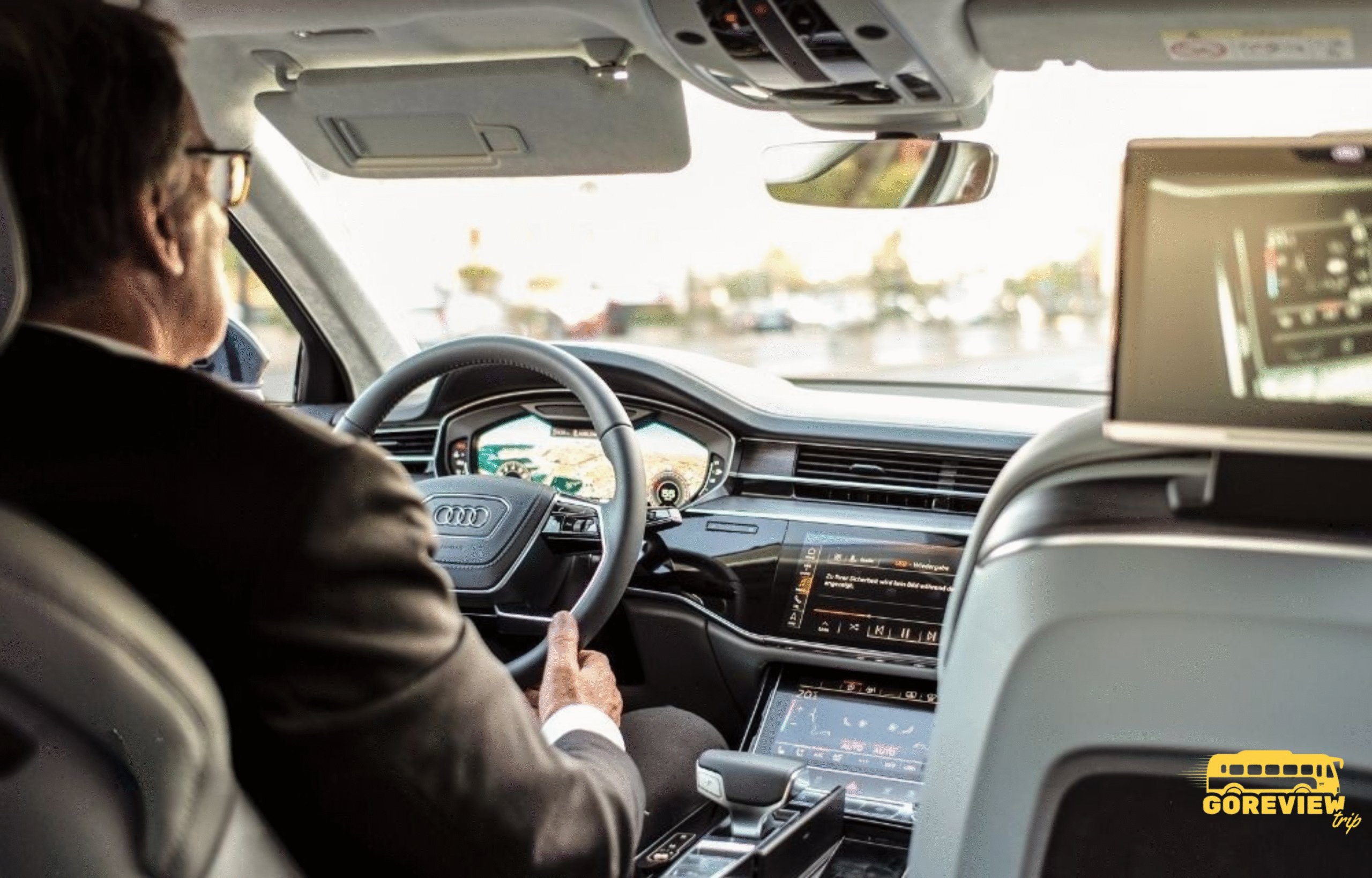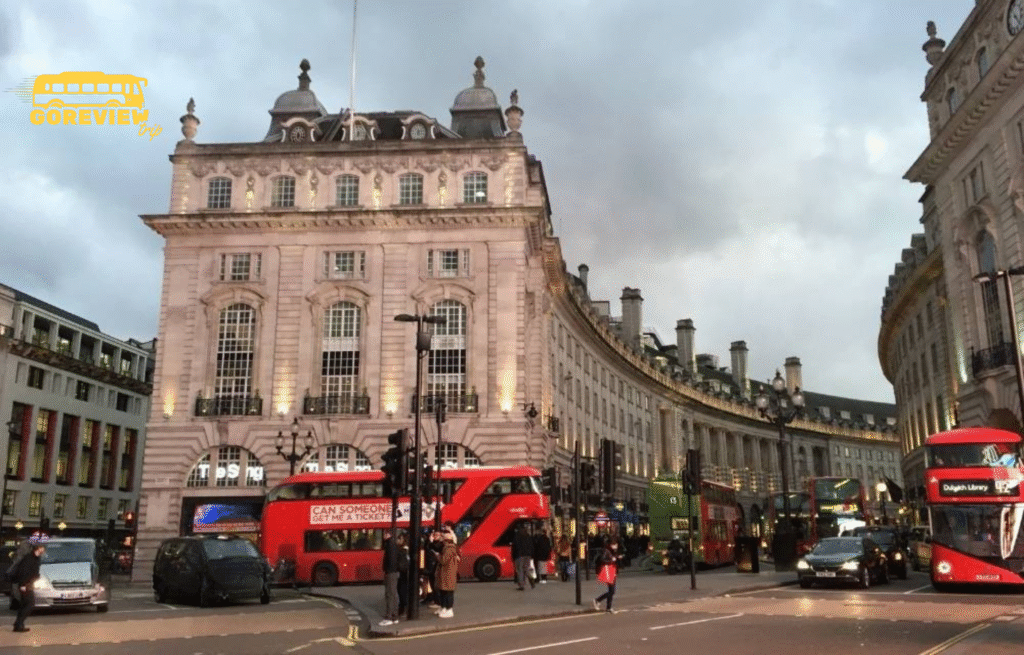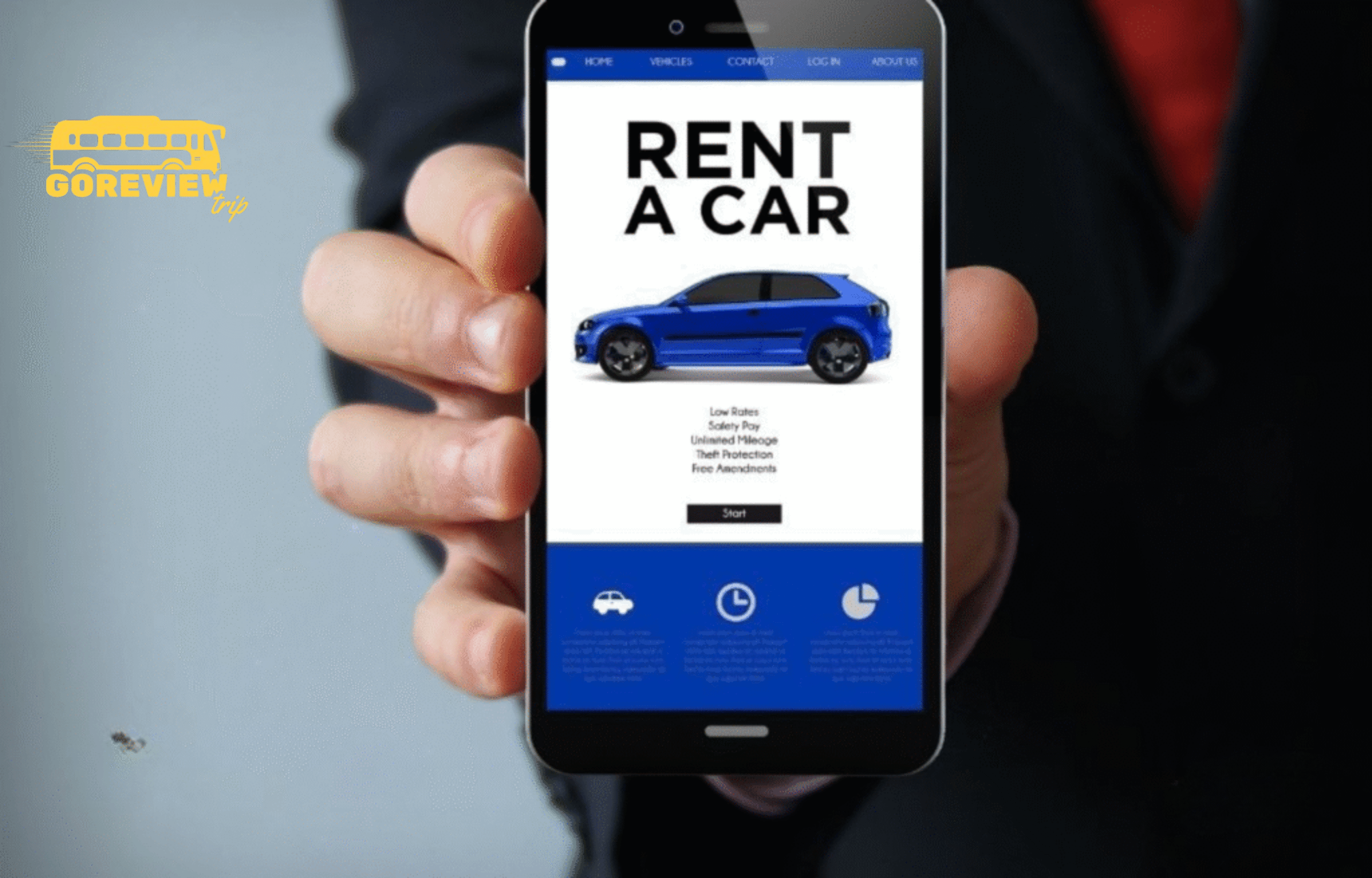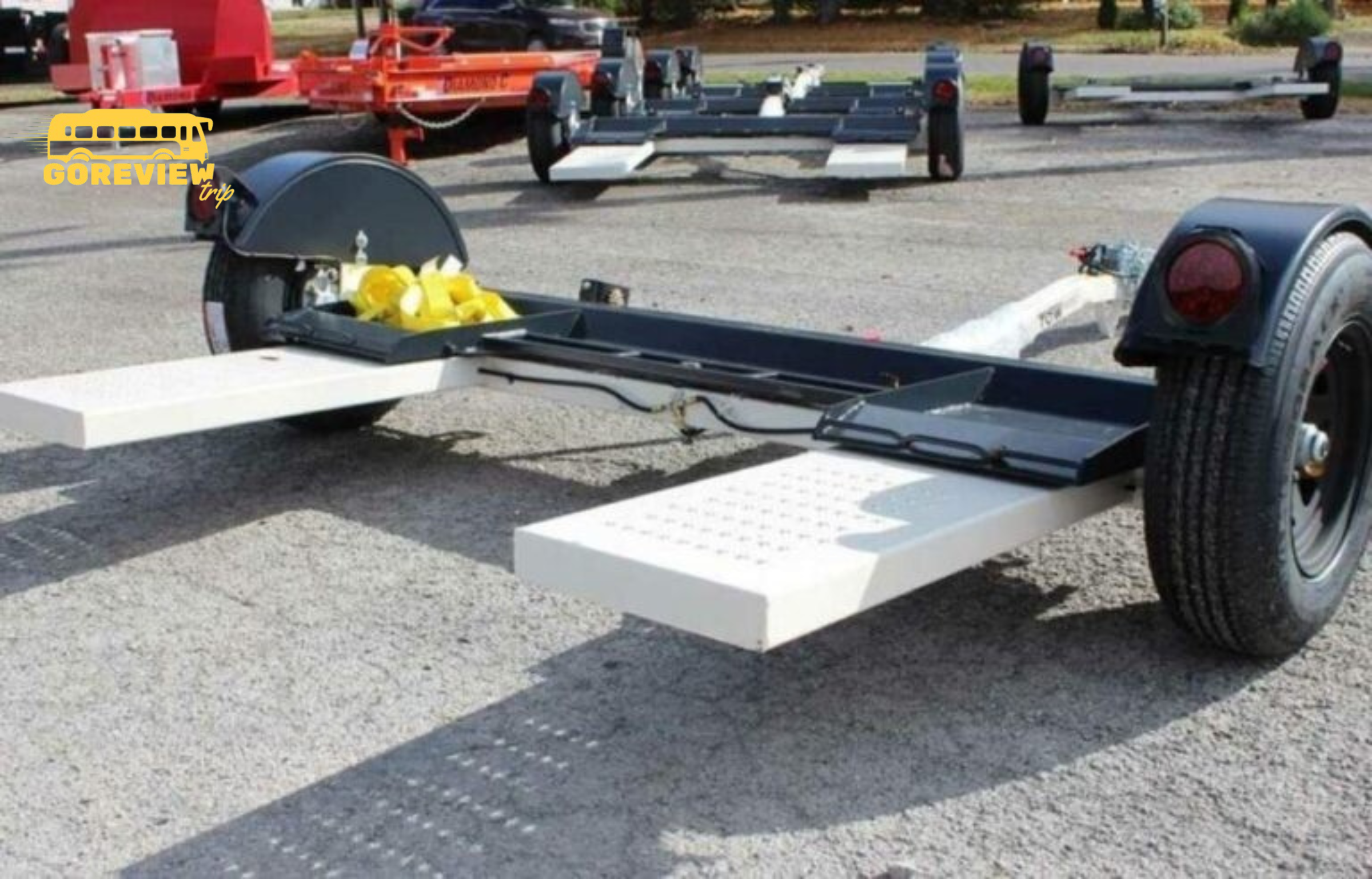Hi everyone, Lyra here! There’s a particular kind of daydream I know many of us share: a vision of driving through the English countryside. Picture this: you’re cruising down a narrow lane flanked by ancient stone walls, dappled sunlight filtering through a canopy of green, on your way to a pub lunch in a village with a name like “Stow-on-the-Wold.” It’s a romantic, intoxicating image.
But then, the practical questions hit. The biggest and most common one I hear from my fellow Americans is, “Can an American rent a car in England?” It’s often asked with a hint of apprehension, imagining bureaucratic hurdles and the daunting prospect of driving on the “wrong” side of the road.
Let me put your mind at ease right away: Yes, absolutely, unequivocally, you can!
Renting a car in England as an American is not only possible, it’s surprisingly straightforward. It’s the key that unlocks the England you can’t see from a train window—the hidden valleys of the Lake District, the dramatic cliffs of Cornwall, the honey-stoned villages of the Cotswolds.
I’ve done it multiple times, and I’m here to demystify the entire process for you. This isn’t just a list of rules; this is a 3000-word deep dive into everything you need to know, from the documents in your wallet to mastering your first roundabout. Let’s get you ready for the drive of a lifetime.
Table of Contents
- 1 1. The Simple Answer & Why You Should Be Excited
- 2 2. The Essential Checklist: What You ACTUALLY Need to Rent a Car
- 3 The Booking Process: A Step-by-Step Guide for Americans
- 4 Decoding the Cost: A Full Breakdown of UK Car Rental Fees
- 5 You’ve Got the Keys! An American’s Practical Guide to Driving in England
- 6 Inspiration Station: Classic English Road Trips
- 7 Frequently Asked Questions (FAQs) for American Drivers
- 8 Final Thoughts from Lyra: Are You Ready to Drive?
1. The Simple Answer & Why You Should Be Excited
As we’ve established, yes, you can rent with your US license. For up to 12 months, your valid, state-issued driver’s license is all the legal permission you need to drive in the United Kingdom (which includes England, Scotland, Wales, and Northern Ireland). The process is designed to be accessible for tourists. So, take a deep breath. The biggest hurdle is purely mental.
The reason to be excited is freedom. England is a country perfectly suited for road trips. The distances between incredible sights are often short, and the landscape is packed with history and beauty. A car allows you to connect the dots between major cities and tiny hamlets, creating an itinerary that is uniquely yours.
2. The Essential Checklist: What You ACTUALLY Need to Rent a Car
When you walk up to that rental counter at Heathrow or in downtown Manchester, having your documents in order is key. Here’s exactly what you need.
Your Valid US Driver’s License
This is the most important document. It must be a full license (not a learner’s permit) and you must have held it for at least one year (some agencies require two years, so check the terms). It also cannot be expired. A standard plastic photocard license is perfect.
The International Driving Permit (IDP): To Get or Not to Get?
This is the most confusing point for many travelers. Legally, you do not need an IDP to rent a car or drive in the UK if your license is in English.
However, here is my “Lyra” advice: Get one anyway.
An IDP is an official, multi-language translation of your existing license, easily obtainable from AAA or AATA in the United States for about $20. Why get it if it’s not required?
- Rental Agency Peace of Mind: Some individual rental agents, especially at smaller, local branches, might be unfamiliar with the 50 different types of US licenses. An IDP is a standardized document they recognize instantly. It can prevent potential confusion or delays at the counter.
- Police Encounters: In the unlikely event you’re pulled over, an IDP can make the interaction smoother. It presents your information in a universally understood format.
- It’s Cheap and Easy: For a minimal cost and effort, it removes any shred of doubt. Think of it as cheap travel insurance for bureaucracy.
Verdict: Not legally mandatory, but highly recommended for a smoother experience.
Age Requirements: The Under-25 and Over-70 Rules
Age is a significant factor in UK car rentals.
- Minimum Age: The absolute minimum age is typically 21, but many major rental companies set their own minimum at 23 or even 25.
- The “Young Driver Surcharge”: If you are under 25, you will pay a hefty daily surcharge. This can be anywhere from £30 to £50 per day, often capped after 10 days. This fee is non-negotiable and reflects the higher insurance risk.
- Maximum Age: Some companies also have an upper age limit, often around 70 or 75. If you fall into this category, you may need to provide a doctor’s letter confirming your fitness to drive or face other restrictions. Always declare your age accurately when booking online to avoid disappointment.
Your Passport
This is your primary form of identification. The rental agency will need to see it to verify your identity and that you are a visitor to the country.
A Credit Card in Your Name
You need a major credit card (Visa, MasterCard, American Express) for the rental. The name on the card must match the name on the driver’s license of the primary driver. This is non-negotiable. They will use it for two things:
- Payment: To pay for the rental itself.
- Security Deposit: To place a hold for a security deposit (or “excess”), which can range from £250 to over £1,500. This is to cover potential damages, fines, or fuel charges. Debit cards are rarely accepted for the security deposit.
The Booking Process: A Step-by-Step Guide for Americans
Booking your car correctly is half the battle.
When to Book and Why It Matters
Book your car as far in advance as possible, especially if you need an automatic transmission or are traveling during peak season (summer, holidays).
- Price: The earlier you book, the cheaper the rates.
- Availability: Automatics are less common than manual (“stick shift”) cars in the UK and get booked up first. If you can’t drive a manual, booking early is essential.
I recommend using a comparison site like Kayak, Rentalcars.com, or AutoEurope to see all your options, but then double-check the rates on the rental company’s direct website (Hertz, Enterprise, etc.).
Choosing a Rental Company: The Big Names vs. Local Players
- Major International Brands (Hertz, Avis, Enterprise, Sixt): You know their names. They have desks at all major airports and city centers. Their prices might be slightly higher, but they offer reliability, a large fleet, and standardized processes that are easy for international visitors to navigate.
- Local UK Companies (e.g., Arnold Clark): Sometimes you’ll find great deals with local companies, especially in Scotland. Their service can be more personal, but it’s wise to read recent reviews to ensure they have a good track record with international renters.
For a first-timer, I recommend sticking with a major international brand for simplicity and peace of mind.
Choosing the Right Car: My Two Golden Rules
- Go Smaller Than You Think: English roads, especially in the countryside and villages, are famously narrow. A large American-style sedan or SUV will be a nightmare to navigate and park. Book an “Economy” (like a Vauxhall Corsa) or “Compact” (like a Ford Focus) car. They have plenty of room for two people and luggage and will make your driving experience infinitely less stressful.
- GET AN AUTOMATIC! I cannot shout this loudly enough. Unless you are extremely proficient at driving a manual transmission, pay the extra money for an automatic. Remember, the gear stick will be on your left, requiring you to shift with your non-dominant hand while also navigating on the left side of the road. Don’t add another layer of complexity. Just get the automatic.
Decoding the Cost: A Full Breakdown of UK Car Rental Fees
The price you see online is just the starting point. Here’s what you’ll really pay for.
The Base Rental Rate
This is the advertised daily price. It’s what you lock in when you book.
The Insurance Maze: CDW, LDW, and Your Credit Card Coverage
This is the most complicated part. In the UK, basic third-party liability insurance is legally included in the rental price. But the big question is damage to the rental car itself.
- Collision Damage Waiver (CDW) / Loss Damage Waiver (LDW): This isn’t technically insurance, but a waiver from the rental company. It limits your financial responsibility if the car is damaged or stolen. However, it always comes with a high “excess” (what we call a deductible). This means if you have an accident, you are still liable for the first £1,000 – £2,000 of the damage.
- Super CDW / Excess Reduction: At the rental counter, they will heavily sell you an extra daily insurance to reduce that excess to zero. This can be very expensive, sometimes doubling the cost of the rental.
- Using Your US Credit Card Coverage: This is the pro move, but you must do your homework. Many premium US credit cards (like the Chase Sapphire Reserve or certain Amex cards) offer primary rental car insurance. This means you can decline the rental company’s CDW.
- Action Plan: Before you travel, call your credit card company. Ask them specifically: “Do you offer primary CDW coverage in the United Kingdom?” Get the answer in writing if possible and bring a letter of coverage. Be prepared for the rental agent to be skeptical. They may place a larger hold on your card, but stand firm if you know you’re covered.
The Young Driver Surcharge
As mentioned, a daily fee for drivers under 25. Budget for it.
One-Way Fees & Additional Drivers
Want to pick up at London Heathrow and drop off in Edinburgh? You’ll pay a “one-way fee,” which can be over £50. Adding a second driver also costs a small daily fee.
Fuel Policies: Petrol vs. Diesel
- Policy: The most common policy is “full-to-full.” You get the car with a full tank and you must return it full. Use an app to find a gas station near the airport before you return it.
- Petrol vs. Diesel: PAY ATTENTION TO THIS. Unlike in the US where diesel is mostly for trucks, it’s common in European cars. Putting the wrong fuel in the tank is a very expensive mistake that is not covered by insurance. The fuel type is usually written inside the fuel cap. Petrol pumps are typically green; diesel pumps are typically black. Double-check before you pump.
Hidden Costs: Airport Fees, Congestion Charges, and More
- Airport Surcharges: Picking up from an airport location always includes an extra fee baked into the price.
- Road Tax (VED): This is usually included in the rental cost.
- London Charges: If you drive in central London, you are subject to the Congestion Charge (£15/day) and the Ultra Low Emission Zone (ULEZ) charge (£12.50/day). These are complex to pay. My advice? Never, ever drive your rental car in central London.
You’ve Got the Keys! An American’s Practical Guide to Driving in England
This is it. The moment of truth. Don’t be nervous. Be methodical.

The Big One: How to Comfortably Drive on the Left
Your brain will adjust faster than you think.
- Mantra: “Stay left, look right.” Repeat it. At junctions, your danger is from the right.
- Your Car Position: The driver should be near the center line of the road. Your instinct will be to hug the left curb. Fight it.
- Your Co-Pilot: The passenger is your best friend. Their job is to help navigate and remind you “Stay left!” on every turn.
- First Drive: If possible, make your first drive a short, simple one on quiet roads, not pulling out of Heathrow onto the M25 at 5 PM.
Mastering the Roundabout: A Step-by-Step Method
Roundabouts are efficient and ubiquitous. They are not scary.
- Approach: As you approach, look at the signs to see which exit you need and which lane to be in.
- Yield: You must yield to all traffic already in the roundabout, coming from your right.
- Enter: When there is a safe gap, enter the roundabout, proceeding to your left (clockwise).
- Signal: Signal left just after you pass the exit before the one you want.
- Exit: Exit into the appropriate lane. If you miss your exit, just go around again! It’s perfectly fine.
Understanding English Roads: Motorways, A-Roads, and B-Roads
- M-Roads (Motorways): Our equivalent of Interstates. Blue signs. These are the fastest way to get between major cities. The speed limit is 70 mph. The “fast lane” is the outermost lane (the right lane).
- A-Roads: The main arteries. Green signs. Can be dual-carriageway (like a divided highway) or single-carriageway. Speed limits vary from 30-70 mph.
- B-Roads & Unclassified Lanes: White signs. These are the narrow, winding, scenic country lanes you’re dreaming of. Drive slowly, be prepared for stone walls right next to the road, and be ready to pull over to let oncoming traffic pass.
Speed Limits (in MPH), Road Signs, and Cameras
Speed limits are in Miles Per Hour (MPH), just like home. They are strictly enforced by speed cameras everywhere. A sign with a national speed limit symbol (white circle with a black diagonal slash) means 70 mph on motorways, 60 mph on single-carriageways, unless otherwise posted.
Parking Your Chariot: Pay and Display Explained
In towns and cities, you’ll use “Pay and Display” car parks. You buy a ticket from a machine for a certain amount of time and display it on your dashboard. Many now use phone apps like Ringo or PayByPhone, which are very convenient.
The London Problem: Congestion Charge, ULEZ, and Why You Should Avoid Driving in the Capital
I’ll say it again: Do not drive in London. It’s a labyrinth of one-way streets, bus lanes (with huge fines for driving in them), and expensive daily charges. The public transport (the Tube, buses) is fantastic. If your trip starts or ends in London, pick up or drop off your car at Heathrow Airport (LHR) or a suburban location, not in the city center.
Inspiration Station: Classic English Road Trips
Now for the fun part! Where can your car take you?
- The Cotswolds: The quintessential English countryside experience. Drive a loop from Bath or Oxford through villages like Bourton-on-the-Water, Bibury, and Upper and Lower Slaughter.
- The Jurassic Coast (Dorset & Devon): A stunning drive along England’s south coast, featuring dramatic cliffs, fossil beaches, and charming seaside towns.
- The Lake District: For dramatic scenery. Wind your way around lakes (or “meres” and “waters”) like Windermere and Ullswater, and drive over breathtaking mountain passes like the Kirkstone Pass.
Frequently Asked Questions (FAQs) for American Drivers
- Can I use my US debit card? For the final payment, maybe. For the security deposit, almost certainly not. You need a credit card.
- What happens if I get a parking ticket or speeding fine? The rental company will be notified. They will pay the fine and then charge your credit card, along with a hefty “administrative fee.”
- Are the cars very different? Besides the steering wheel being on the right, they are largely the same. You’ll find familiar brands like Ford, but also European brands like Peugeot, Renault, and Vauxhall.
Final Thoughts from Lyra: Are You Ready to Drive?
So, can an American rent a car in England? Not only can you, but you absolutely should if you crave a deeper, more personal travel experience.
Yes, it requires a bit more planning. You need to do your insurance homework, book the right car, and take a deep breath before your first roundabout. But the freedom you gain is immeasurable. It’s the freedom to discover that tiny village not listed in the guidebook, to have a picnic overlooking a dramatic coastline, and to travel at your own pace. It’s the freedom to have a true adventure.
You can do this. Follow this guide, be a patient and observant driver, and get ready to create the English road trip you’ve always dreamed of.
Safe travels, Lyra






